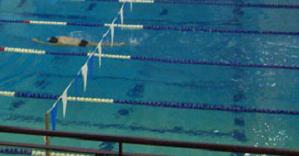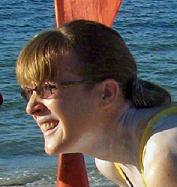The Freestyle Swim Stroke Is A Total Body Workout
The freestyle front crawl swim stroke is a long axis swim stroke, often used by speed swimmers and open water swimming, because it’s a streamlined position that minimizes frontal resistance. It is a stroke rich in history. By balancing your core with a long axis swim stroke, the freestyle/crawl swim stroke can propel you through the water quicker. Ideally, you use all of the big muscle groups to gain the most momentum, making it the ideal total body workout without the see-saw movements of butterfly and breast-stroke.
The freestyle front crawl swim stroke is properly executed in two phases, which could best be described as the propulsive phase and the recovery phase. Both the arm strokes and the leg kicks are always propelling the body through the water, but core-driven propulsion is the goal of any swimming stroke. Through the core rotational energy, your arms are used to achieve the forward, linear motion, which is required to achieve optimal speed.
Freestyle 's Home Position
The home position of this long axis front swim stroke can be considered as a side position, where each stroke begins and ends, with the body fully-streamlined. The shoulder should be 6 to 10 inches under the water’s surface, while the hand will also be 6 to 10 inches underwater, when the arm is on a horizontal plane. To be considered a well-balanced swimmer, there will only be a split-second that you will actually be on your stomach, during the core rotation.
During the arm movement of this long axis swim stroke, the upward rotation of the shoulder blade allows the swimmer to become elongated, the hand enters the water and the wrist, elbow and arm extends to “starting” position. The clavicular portion of the pectoralis major is joined by the latissimus dorsi, to generate force, while the arm is underwater.
Wrist flexors hold the wrist in position, as the elbow flexors contract from a full extension, into a 30 degree flexion. The triceps brachii extend the elbow, to bring the hand backward and upwards, before entering the water. These upper body movements are the propulsion phase of the freestyle/crawl swim stroke.
During the recovery phase of this long axis swim stroke, the deltoid and rotator cuff are used to bring the arm and hand back out of the water, (close to the hips) and then, the arm and hand are returned to the overhead position, for the next propulsive phase. Simultaneously, one arm will be in the propulsive phase, while the other arm is going through the recovery phase. The ideal execution will result in optimal forward momentum.
During both phases of the arm strokes, there are other major muscle groups involved, but the shoulder blade stabilizing muscles perform a necessary function. As the name implies, the shoulder stabilizers work in conjunction with the rotator cuff and deltoid, to perform stabilization of the upper body.
Stroke Syncronicity
The abdomen muscles link the upper body to the lower body, so that the body rolls and kicking motions are optimized. The core muscle group is responsible for the balance during the rolling phase that occurs as the alternating arms and legs perform a downbeat and upbeat motion, in synchrony.
By engaging the hips and the leg muscle groups, the freestyle/crawl swim stroke becomes a total body workout. Much like the arm strokes, the kicking motion has a propulsive phase and a recovery phase. The downbeat is the propulsive phase of the kick, while the recovery phase is the upbeat. The iliopsoas and rectus femoris muscle begins the hip flexion and initiates the knee extension. The quadriceps help generate the force necessary for powerful knee extension. During the entire kicking motion, the foot is in a plantar-flexed position. During the recovery phase of the kick, the gluteus maximus and medius muscles contract, as do the hamstrings.
Without the core rotation, you would miss out on using all the big muscle groups that provide a total body workout, but more importantly- your arm and shoulder motions would have little effect. To see the difference, you can lay on your stomach and swim flat. You will see how important the entire body is to performing the freestyle/crawl swim stroke. This long axis swim stroke can be the most effective option, for those natural swimmers who hope to swim with more speed.
back to the top of freestyle page

Don't just build a website, build a web business!
Beauty is just a click away! Visit me, your Independent Beauty Consultant.








